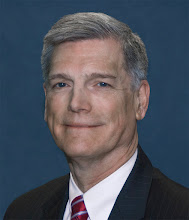 Those of you interested in learning more about the myths and reality of "green" energy will want to put the book Power Hungry on your summer reading list. Written by Robert Bryce, editor of the Energy Tribune web site, the book describes the "cold facts" of our power needs. Bryce explores 13 myths about energy on topics ranging from wind and solar to cellulosic ethanol and electric cars.
Those of you interested in learning more about the myths and reality of "green" energy will want to put the book Power Hungry on your summer reading list. Written by Robert Bryce, editor of the Energy Tribune web site, the book describes the "cold facts" of our power needs. Bryce explores 13 myths about energy on topics ranging from wind and solar to cellulosic ethanol and electric cars.As others on this blog have made clear, we believe the nation's energy needs require us to pursue all options. Toward that end, we think it important to be clear about the facts and trade-offs involved in energy policy choices. (An illustration of just one of those trade-offs - the amount of land required to replace nuclear generation - is provided on the NEI web site here.) In Power Hungry, Robert Bryce has attempted to share what he has learned about those facts and trade-offs that sometimes does not fit the media "template". We commend it to your reading.

Comments
Also, the gents at www.cleanenergyinsight.org have compiled some informative Fact Sheets and posts.
If we are to pursue an "all of the above" approach to energy supply, let's at least be honest about the materials input, the land-use footprint, the on-demand factor and the scalability of each before throwing more money at a losing horse. Bangladesh is not the going wind and solar route - they're going with Russian nukes (BN-800).
1. Consumption, Conservation and energy efficiency
2. Fossil Fuels-Oil, natural gas and coal
3. Nuclear
4. Renewables-wind, solar, ocean, biofuels, etc.
5. Geothermal, hydro, etc.